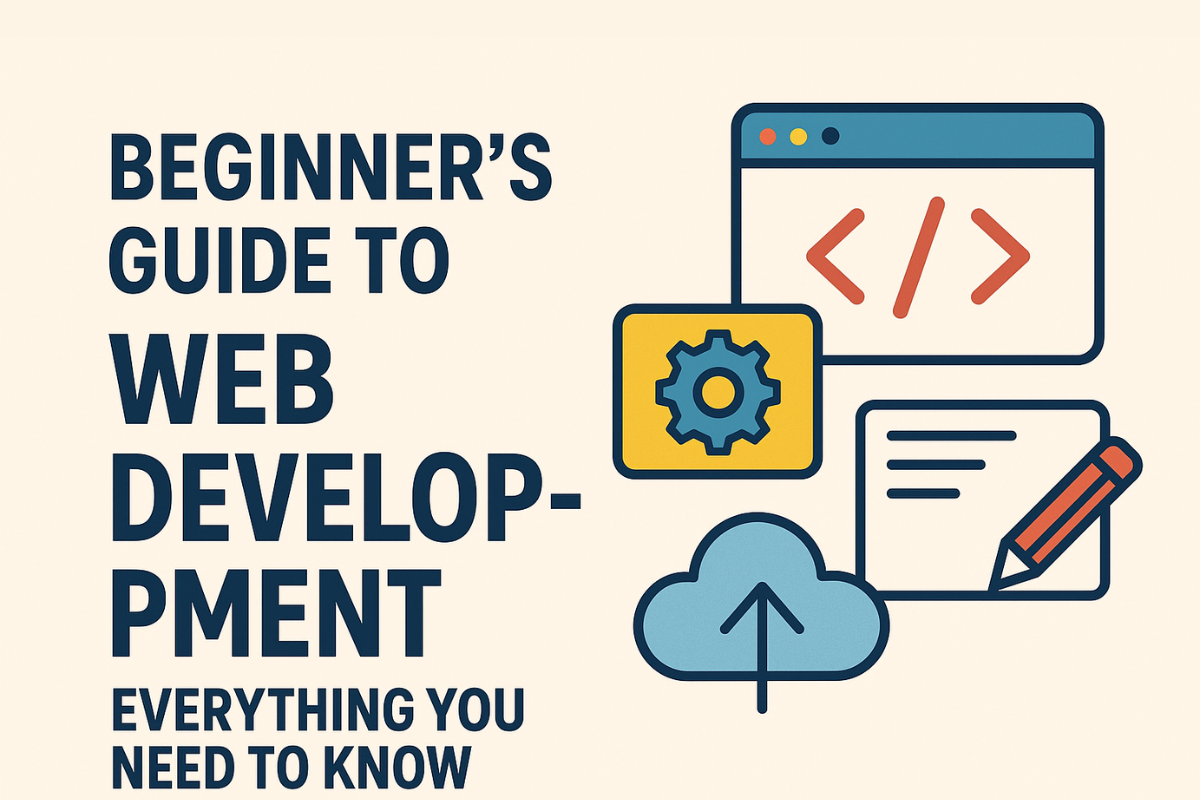Web development is one of the fastest-growing and most exciting fields in today’s digital era. Whether you’re a student, a budding entrepreneur, or someone simply curious about how websites are built, learning the basics of web development opens countless opportunities. From creating personal blogs to building e-commerce stores, web development is the backbone of everything you see online.
In this beginner’s guide, we’ll explore everything you need to know about web development, including its basics, essential tools, technologies, and future trends. By the end, you’ll have a clear roadmap to start your journey in the world of web development.
What is Web Development?
Web development refers to the process of creating, building, and maintaining websites or web applications. It involves a mix of coding, design, and technical skills to make a website functional, interactive, and visually appealing.
Here’s a quick table to help you understand the fundamentals of web development at a glance:
| Aspect | Details (Basic Information) |
|---|---|
| Definition | The process of creating, developing, and maintaining websites and web applications. |
| Types | Frontend Development, Backend Development, Full-Stack Development |
| Core Languages | HTML, CSS, JavaScript, PHP, Python, Ruby, Java |
| Frameworks & Libraries | React, Angular, Vue.js, Django, Laravel, Express.js |
| Essential Tools | Code Editors (VS Code, Sublime), Git & GitHub, Chrome DevTools |
| Key Skills | Coding, Problem-Solving, Responsive Design, Debugging |
| Popular Platforms | WordPress, Shopify, Wix, Squarespace |
| Career Options | Frontend Developer, Backend Developer, Full-Stack Developer, Web Designer, UX/UI Developer |
| Future Trends | AI in Web Development, No-Code Platforms, Progressive Web Apps (PWA), Web 3.0 |
Types of Web Development
To understand web development, you first need to know the three main categories:
1. Frontend Development
- Focuses on the visual aspects of a website—the parts users interact with.
- Uses HTML, CSS, and JavaScript to build layouts, buttons, menus, forms, etc.
- Example: When you click on a navigation bar or see animations, that’s frontend work.
2. Backend Development
- Manages the server-side of a website.
- Handles databases, server requests, and user authentication.
- Common backend languages include PHP, Python, Ruby, Node.js, and Java.
3. Full-Stack Development
- Combines both frontend and backend skills.
- Full-stack developers can handle everything from designing user interfaces to managing databases.
Essential Skills for Web Developers
If you want to get started in web development, here are the must-have skills:
- HTML & CSS – The backbone of web structure and design.
- JavaScript – Adds interactivity and functionality.
- Responsive Design – Ensuring websites work across devices.
- Version Control (Git & GitHub) – To manage code changes.
- Basic SEO Knowledge – For optimizing websites for search engines.
- Problem-Solving & Debugging – To fix issues and optimize performance.
Popular Tools & Platforms in Web Development
Beginners should get familiar with these tools and platforms:
- Code Editors: VS Code, Sublime Text, Atom.
- Version Control: Git and GitHub.
- Content Management Systems (CMS): WordPress, Joomla, Drupal.
- Web Hosting Platforms: Bluehost, HostGator, SiteGround.
- Design Tools: Figma, Adobe XD, Canva.
Frameworks and Libraries to Learn
Frameworks and libraries speed up web development. Here are the most popular:
- Frontend Frameworks: React, Angular, Vue.js.
- Backend Frameworks: Express.js, Django, Laravel, Spring.
- CSS Libraries: Bootstrap, Tailwind CSS.
Why WordPress is Beginner-Friendly
WordPress powers over 40% of websites worldwide. Beginners love WordPress because:
- It requires little to no coding knowledge.
- Thousands of free & premium themes and plugins are available.
- SEO-friendly features are built-in.
- Ideal for blogs, e-commerce, and business websites.
Future of Web Development
The future of web development is shaping up with exciting innovations:
- AI & Machine Learning Integration – Smarter websites with personalization.
- Progressive Web Apps (PWAs) – Mobile-app-like websites.
- No-Code Development – Drag-and-drop builders for quick website creation.
- Web 3.0 & Blockchain – Decentralized applications and smarter online experiences.
Step-by-Step Roadmap for Beginners
- Learn HTML, CSS, JavaScript.
- Understand frontend basics.
- Move to backend development (Node.js, PHP, Python).
- Learn databases (MySQL, MongoDB).
- Understand frameworks (React, Django, Laravel).
- Practice building real projects.
- Master version control with GitHub.
- Explore hosting & deployment.
- Stay updated with new trends.
Final Thoughts
Web development is a rewarding career choice with endless opportunities. As a beginner, you should focus on mastering the basics—HTML, CSS, and JavaScript—before moving into advanced frameworks and backend technologies. The best part? You don’t need a computer science degree to become a successful developer. With practice, patience, and curiosity, anyone can build a career in web development.
If you’re serious about starting, begin small—create a personal portfolio website, experiment with WordPress, and explore coding challenges. Over time, you’ll gain confidence and expertise to take on professional projects.

